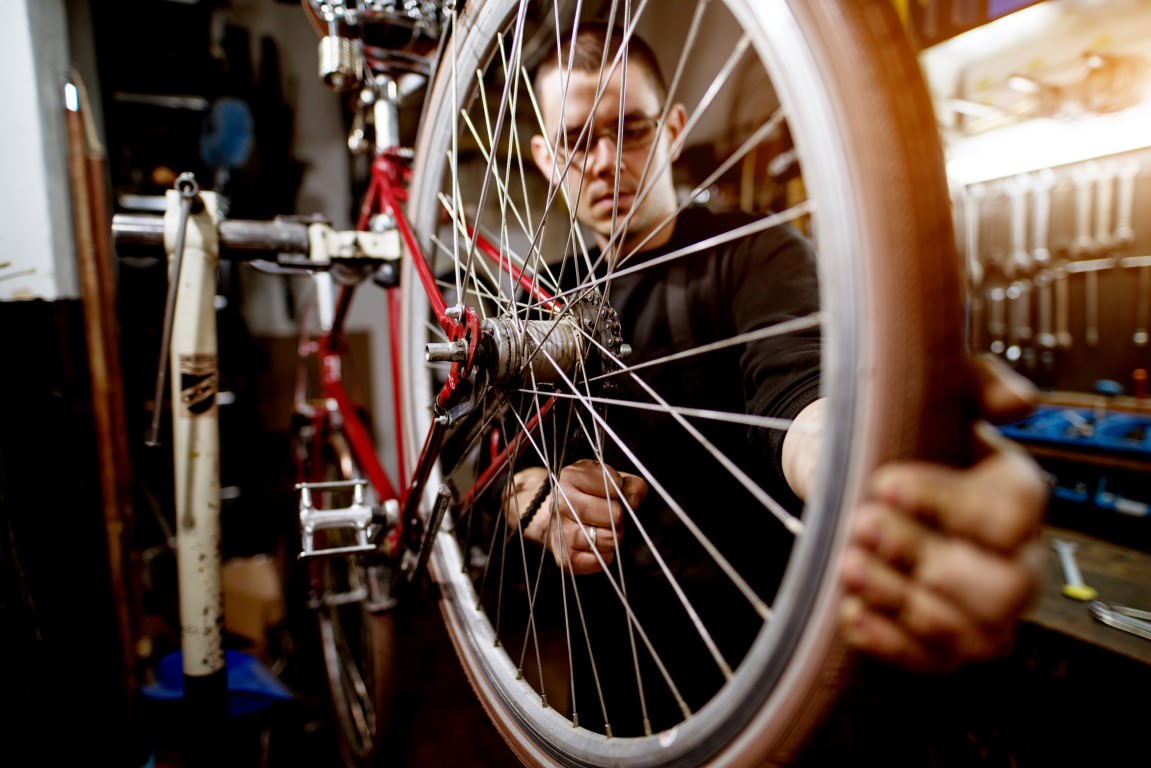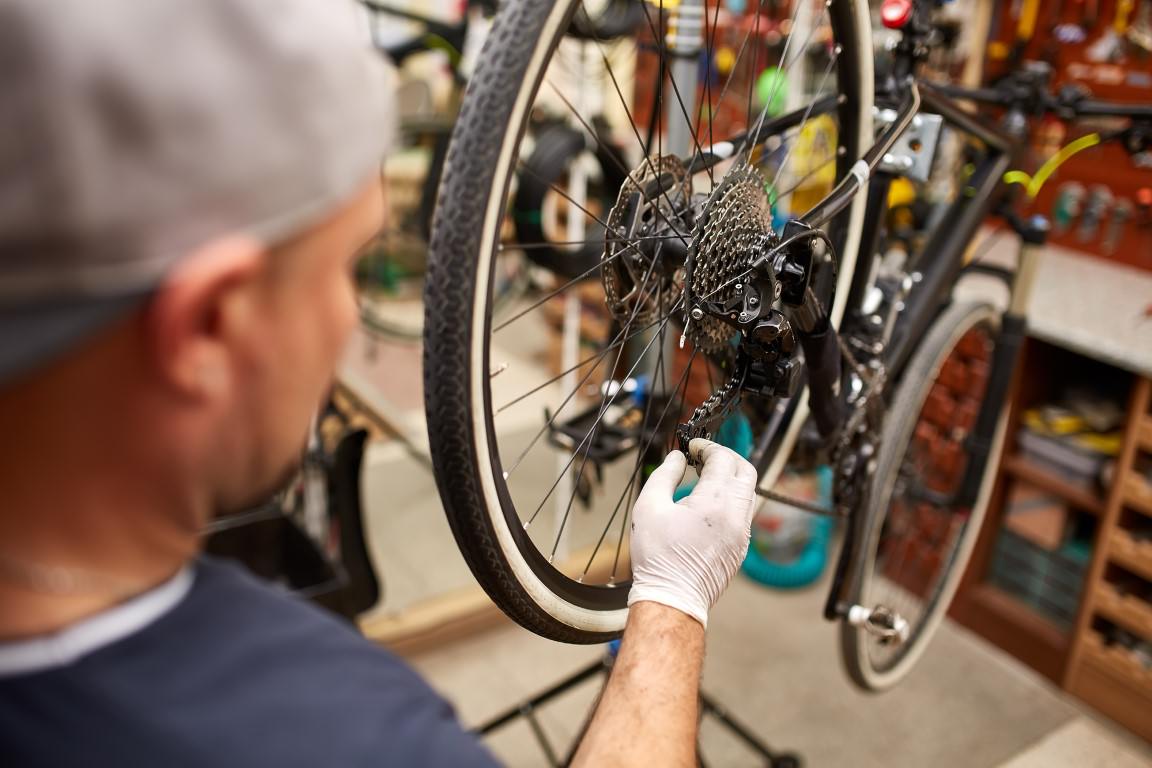How to Tell if There’s a Problem
Identifying issues with a bike’s rear wheel not spinning freely is essential for a smooth and safe ride. Look out for the following signs that indicate trouble with the wheel’s spin:
1. Physical resistance: While lifting the bike off the ground, give the rear wheel a spin. It should rotate smoothly and come to a gradual stop after a few revolutions. If it stops suddenly or shows resistance while spinning, there might be a problem.
2. Unusual sounds: When spinning the rear wheel, listen for any grinding, clicking, or squeaking noises. These sounds often point to issues with the bearings, brake, or other wheel components.
3. Wobble or sway: Observe the rear wheel while spinning to check for side-to-side wobbling or swaying. This suggests that the wheel isn’t aligned properly and requires attention.
4. Discoloration and wear: Visually inspect the rear wheel for signs of wear and tear such as discoloration, rust, or debris. These could affect the wheel’s ability to spin freely.
Using these observations, cyclists can determine if there’s an issue with their rear wheel spinning freely. If a problem is detected, it’s time to examine the possible causes and find a solution. Keep in mind that regular maintenance is key to preventing these issues and ensuring a safe and enjoyable ride.
Why Your Rear Wheel Might Not Be Spinning Freely
There are several reasons why your rear wheel might not be spinning freely. Below are some common causes, divided into sub-sections.
Wheel Alignment
It’s possible that the wheel is out of alignment, causing it to rub against the frame or other components. You can check this by lifting the bike off the ground and spinning the wheel to see if it wobbles from side to side. If it does, you’ll need to re-align the wheel by loosening the axle nuts, straightening the wheel, and then re-tightening the nuts.
Brake Problems
Brake calipers or pads may be pressing against the rim or disc, making it difficult for the wheel to spin freely. Check if the brakes are properly adjusted and if the pads have enough clearance when not engaged. Common issues include misaligned calipers, worn-out brake pads, or a damaged brake cable. Addressing these problems should improve the wheel’s movement.
Axle and Bearing Issues
Axle or bearing problems may contribute to a wheel that doesn’t spin freely. Worn bearings, for example, can cause friction between the axle and the wheel hub. To diagnose this issue, remove the wheel from the bike and try spinning it while holding the axle. If it doesn’t rotate smoothly, it’s likely that the bearings need cleaning, adjusting or replacing.
Other Causes
Additional factors that may affect the wheel’s ability to spin freely include:
- Tire pressure: Ensure the tire is properly inflated. Low pressure can create added drag and resistance.
- Loose spokes: Check the spokes for tightness and consider tightening them as needed.
- Damaged or bent rim: Inspect the rim for any visible damage that could obstruct the wheel’s rotation.
Addressing these issues should help you resolve the problem and achieve smooth spinning of your bike’s rear wheel.

Solution and Repair
When a bike’s rear wheel does not spin freely, it can result in a frustrating riding experience. Luckily, fixing the problem is possible with some simple troubleshooting techniques. This section covers three major solutions: adjusting the wheel, fixing brake issues, and replacing bearings.
Adjusting the Wheel
Start by examining the wheel to ensure it’s properly seated in the dropouts. If it’s not, you may need to loosen the axle nuts or quick release skewer, align the wheel in the dropouts, and re-tighten. This can typically be done using a wrench or an adjustable spanner. Check for any bent or damaged spokes that could be causing the wheel to wobble and impede its ability to spin freely.
Fixing Brake Issues
Inspect the rear brake for any issues that may be causing friction against the wheel. Check if the brake pads rub against the rim or if the caliper or brake arms are misaligned.
Follow these steps to address the brake problem:
- Loosen the brake caliper adjustment bolt.
- Align the brake pads so they’re evenly spaced from the rim.
- Tighten the adjustment bolt to secure the brake caliper in position.
- Test the brake lever to ensure proper action.
If the brakes still aren’t functioning properly, consult a bike shop for further assistance.
Replacing Bearings
If the rear wheel bearings are worn or damaged, they can prevent the wheel from spinning freely. To replace them, follow this process:
- Remove the rear wheel from the bike.
- Use a cone wrench to loosen and remove the locknut and cone from the axle.
- Remove the old bearings and clean the hub shell with a degreaser.
- Install new bearings, making sure they’re properly seated and greased.
- Reassemble the axle, cone, and locknut, adjusting the tension as needed.
- Reinstall the rear wheel and check for free spinning.
If the issue persists despite employing these suggested fixes, consult a professional bike mechanic to help diagnose and address the problem.
Preventive Measures
Preventing a bike’s rear wheel from not spinning freely is essential for a smooth and safe ride. Several measures can be taken to avoid this issue, such as regular inspections, proper maintenance, and adopting correct riding techniques.
Regular Inspection
Periodically checking the bike components is crucial for detecting any issues early. Bike owners should inspect:
- The wheel hub for any signs of wear or damage
- The spokes to ensure they’re properly tensioned and aligned
- The brake components for optimal functionality
Regular inspections can identify potential problems before they escalate and affect the rear wheel’s spinning ability.
Proper Maintenance
Performing routine maintenance helps keep a bike in good condition and prevents the rear wheel from not spinning freely. Key aspects of proper maintenance include:
| Component | Maintenance Action |
|---|---|
| Chain | Clean and lubricate regularly to reduce friction |
| Tire pressure | Check and adjust according to manufacturer’s recommendations |
| Gears | Periodically adjust to ensure smooth gear shifting |
Adhering to a consistent maintenance schedule will help avoid rear wheel issues and promote a longer-lasting bike.
Correct Riding Techniques
Implementing proper riding techniques can prevent unnecessary stress on the rear wheel and other bike components. Cyclists should:
- Shift gears progressively to avoid sudden changes that strain the chain and gears
- Avoid overloading the bike to prevent wheel bearings and spokes damage
- Maintain a steady riding cadence to reduce stress on the drivetrain
Using these techniques ensures a more comfortable and efficient ride while decreasing the risk of the rear wheel not spinning freely.
Frequently Asked Questions
Can a rear bike wheel that doesn’t spin freely cause any safety issues while riding?
A rear bike wheel that doesn’t spin freely can indeed cause safety issues while riding. Impaired wheel movement can lead to decreased bike handling, reduced braking efficiency, and increased risk of accidents. Additionally, it can put undue stress on other components of the bike, leading to premature wear and potential failure. Addressing any issues that impede your wheel’s ability to spin freely is crucial for a safe and enjoyable riding experience.
Are there any specific tools or equipment I need to perform maintenance on my bike’s rear wheel?
To perform maintenance on your bike’s rear wheel, you’ll need a few basic tools and equipment, including:
- A bike stand or a method to suspend your bike off the ground.
- A wrench or a set of Allen keys to remove the rear wheel and adjust components as necessary.
- A tire lever for removing and installing the tire and tube.
- A pump for inflating the tire to the recommended pressure.
- Cleaning supplies, such as a rag, degreaser, and lubricant, to clean and lubricate the chain, cassette, and hub.
Additional specialized tools may be required for more advanced maintenance tasks, like servicing the hub or truing the wheel.
Can issues with a bike’s rear wheel not spinning freely be caused by factors other than those listed in the article?
Issues with a bike’s rear wheel not spinning freely can be caused by factors other than those listed in the article. Although the most common causes are covered, other potential issues may include damage to the hub shell, a bent axle, or internal problems within the freehub mechanism. It’s essential to carefully inspect your bike’s rear wheel and related components to identify the root cause of any issues affecting its ability to spin freely.
Conclusion
A bike’s rear wheel not spinning freely can be attributed to various causes, ranging from a misaligned derailleur to a tight chain or even a seized hub. By identifying and addressing the underlying issue, you can effectively resolve the problem and enjoy a smoother, more efficient ride.
Remember, regular maintenance and proper care of your bike is crucial to prevent potential issues and ensure optimal performance.
